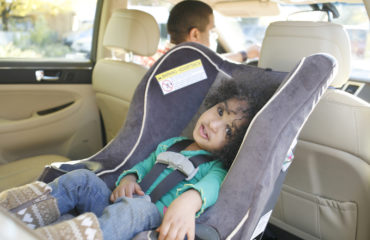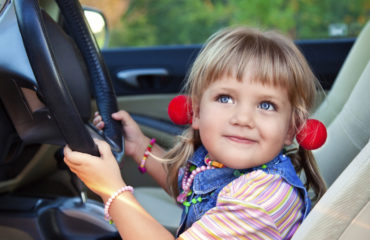This is Part One of a two-part article on educating children about road safety.
Drive in most neighborhoods, and you will see children out playing; walking, running, maybe even riding a bicycle. Drive on a highway, and look into other cars, you will see children in the back seat; talking, reading, and watching. Maybe even in your car’s back seat, you have a son or daughter talking to you or watching you as you drive.
They’re Watching
As we drive, children are present, watching and learning. As children walk along the street or ride their bicycle to school, they are learning what road safety means. The question is what lessons are they learning—one of acting in a safe fashion, or one of creating risks and putting others in jeopardy? Children across the globe learn indirectly by watching whether their parents:
- Wear a seat belt,
- Text and drive
- Drink and drive,
- Obey speed limits, or
- Run red lights.
They also learn directly, through organized efforts and programs set up to educate children about road safety. Either way, children are learning their lessons for a lifetime. Part One of this article discusses some of these organized efforts. Part Two will cover a parent’s role in educating children about road safety.
Helping Our Children
For decades road safety was about giving teenagers the tools needed to drive before getting a driver’s license in a driver’s education class, and then as adults being told what not to do, such as don’t drink and drive. We now recognize the importance of also teaching young children about the ABCs of road safety.
Did you know that each year nearly 400,000 young people die on the world’s roads? That is more than 1,000 a day. Many of these deaths are children just walking to and from school. Crossing the road for many children is a daily life or death challenge. That has to change. Fortunately, it is. One lifesaving example is Tanzania’s “Safer Schools,” a program that combines road safety, child health and access to education.
Other Road Safety Programs Around the World
Denmark now has “Traffic Safety at Eye Level.” This joint effort by the Child Accident Prevention Foundation, Volvo Group Trucks and other companies teaches children between the ages of 7 and 10 how to act in traffic, especially around heavy trucks. Many pedestrian and cyclist injuries happen in a driver’s “blind spot.” Using classroom training and practical hands-on instruction around trucks, children learn what it means to be safe at intersections and around trucks. To date, 75,000 children have been taught greater traffic safety awareness.
In Austria, the Austrian Mobility Research is educating kindergarten children on traffic safety, with a focus on bicycle training, which is done in a real world environment as they learn road safety rules. Starting in a protected area, children perform exercises in co-ordination, concentration and psychomotor abilities. After learning in a protected site how to ride, they venture out into real traffic environments with the trainers. Doing individual exercises and receiving personal feedback are critical components of the endeavor. The program looks at all facets of a comprehensive approach—from the children, to the schools, to the teachers to the parents to the police. It also remains flexible by considering the different abilities of the children. Thus far, 1,500 kindergartners in Graz, Austria have learned how to safely ride a bicycle.
In the state of Victoria, Australia, the RACV (Royal Automobile Club of Victoria) goes to schools with the Street Scene program. Schools request the RACV to attend and discuss passenger safety, pedestrian safety or bicycle safety with their children. The activities include students role playing safe ways to walk near the road, and designing road safety posters. The children also learn what road signs mean, and understand the importance of wearing helmets and seat belts. The program is interactive and designed for a child’s level of learning.
Also in Australia, the Macquarie University in New South Wales has developed Kids and Traffic. Designed for children and adults alike, the goal is to improve children’s safety and develop safer communities. Kids and Traffic teaches adults how to educate children on a variety of road safety issues.
In Malaysia, the Road Safety Marshal Club and Road Safety Department joined Allianz and held a Child Road Safety Education program where 450 children were trained on safe road crossing, understanding traffic signs, stopping on red, buckling up their seat belts and wearing bicycle helmets. You can see some of the activities in the video below.
In London, England, Transport for London has developed a three-tiered approach to children’s safety with education material for children ages 3-4; for children ages 9 to 11; and, finally, for teens. Each level approaches the vital mission of saving children’s lives by providing road safety skills for that age group.
You Can Save a Young Life
Across the globe there is a growing recognition that educating the children is a critical component of road safety. Schools, faith-based communities, non-profit organizations, cities and states are all looking to create a safer environment. You can support that effort and save lives by supporting the efforts in your community. As a community, we can raise children to walk safely, bike safely and drive safely.
What have you done to educate the children in your community on road safety? Let me know in the comments below.
Next week, find out what you can do as a parent to develop a road safety aware child.








